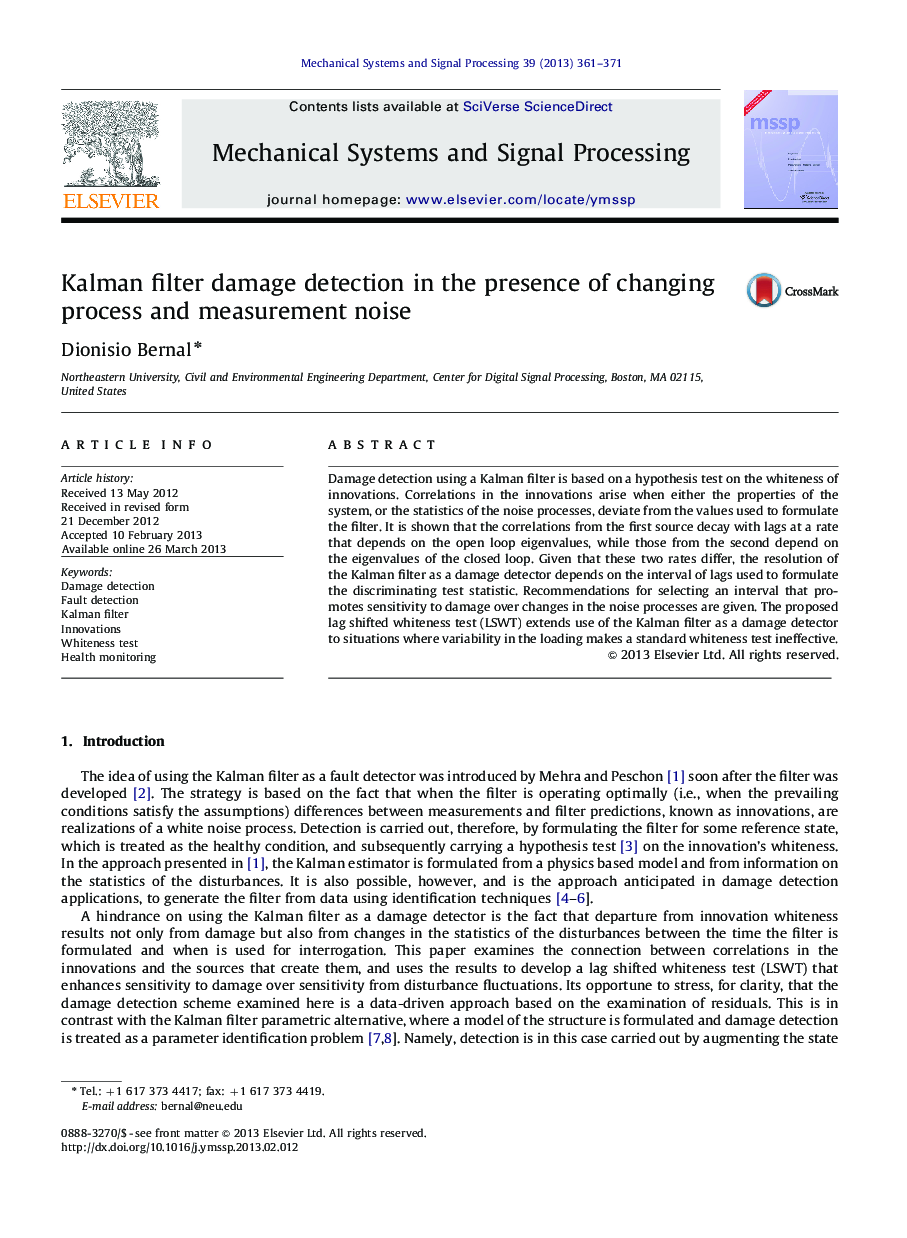| Article ID | Journal | Published Year | Pages | File Type |
|---|---|---|---|---|
| 561240 | Mechanical Systems and Signal Processing | 2013 | 11 Pages |
Damage detection using a Kalman filter is based on a hypothesis test on the whiteness of innovations. Correlations in the innovations arise when either the properties of the system, or the statistics of the noise processes, deviate from the values used to formulate the filter. It is shown that the correlations from the first source decay with lags at a rate that depends on the open loop eigenvalues, while those from the second depend on the eigenvalues of the closed loop. Given that these two rates differ, the resolution of the Kalman filter as a damage detector depends on the interval of lags used to formulate the discriminating test statistic. Recommendations for selecting an interval that promotes sensitivity to damage over changes in the noise processes are given. The proposed lag shifted whiteness test (LSWT) extends use of the Kalman filter as a damage detector to situations where variability in the loading makes a standard whiteness test ineffective.
► Innovations depend on changes in the deterministic and/or stochastic parts of a Kalman filter. ► The connection between changes and innovations is clarified analytically. ► It is shown that the poles of the observer govern the decay rate from disturbances. ► Innovations from damage arise due to a shift between previous cancellations of poles and zeros. ► The effect of damping and signal duration on detection resolution are clarified.
